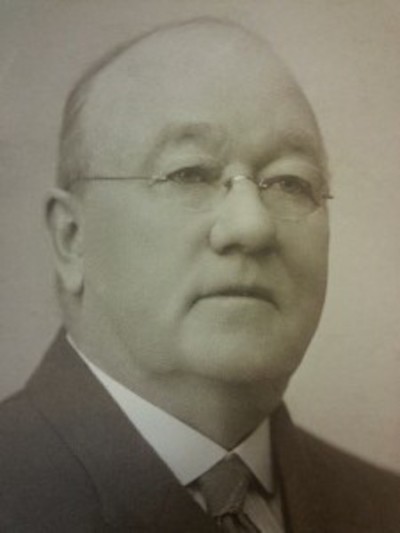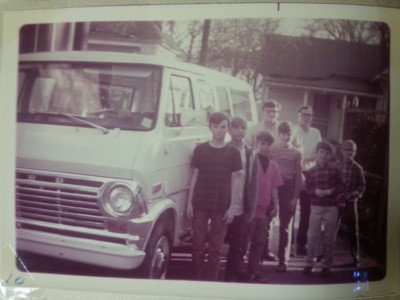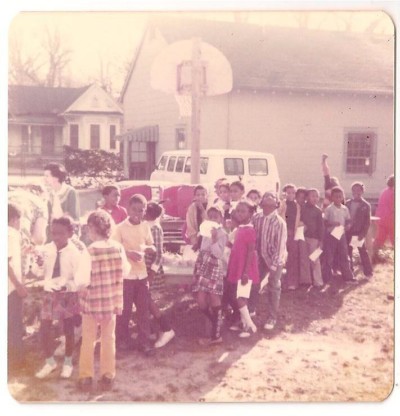Serving Atlanta Communities Since 1916


More than a century has passed since children first crossed the threshold of the Andrew Stewart Day Nursery. What started as a place for very young children also began to welcome older children who came to the Center after school for clubs and activities. Classes for young mothers began soon after the Day Nursery first opened. Well-baby clinics took place on a regular basis to ensure the physical health of children. Children were often fed, bathed, and clothed at the Nursery, and when families faced financial hardships, the Nursery provided food, rent assistance, and coal.
Between 1919 and 2004, the Stewart Center was run by the Atlanta WMU and staffed by Baptist missionaries–people who left their homes and families to live a life of service to others. These missionaries believed that all children deserve to be loved, supported, and provided for, no matter their socioeconomic status.
For over three decades, the Andrew Stewart Day Nursery operated in Bellwood (the modern-day English Avenue neighborhood). At the end of World War II, Atlanta experienced an unprecedented housing crisis; as soldiers returned home from the war to start their families, they couldn’t find adequate housing. Atlanta was a racially segregated city, this made it especially difficult for African American families to find housing. African Americans began to purchase houses on the fringes of white neighborhoods. When this occurred near English Avenue, large-scale white flight took place; within a brief period of time most of the neighborhood’s white families moved away out of prejudice and fear. As the white residents left, in 1949 so too did the Stewart Goodwill Center. The Goodwill Center buildings that had been constructed in the heart of the neighborhood in 1928 were sold, and the Goodwill Center’s leadership began to look for other working-class areas of the city where they could relocate.
After an extensive search, an old store was purchased in south east Atlanta, in an area teeming with children. The Stewart Goodwill Center opened the doors of its new blue building in the summer of 1950. This neighborhood, which would later become known as “Reynoldstown,” was a white, working class neighborhood just like Bellwood.
The Center found a new community where they were needed; hundreds of children came through their doors each week for before and after school care, bible study, arts and crafts, and more. The Goodwill Center seemed to have escaped the racial turmoil of Atlanta’s west side. However, great changes were brewing in Atlanta. In a few short years, construction of I-20 would begin less than half a mile from the Center, drastically changing the landscape of the area. The Civil Rights movement would begin to impact Atlanta through desegregation of schools and public accommodations.
In the 1960’s, African American families began purchasing houses near the Goodwill Center. Just as occurred in English Avenue a decade before, white families began leaving for the suburbs. However, this time the Goodwill Center would not follow suit. Rather than leaving the neighborhood, the leadership of the Goodwill Center made the decision to stay, and to welcome all of the neighborhood children to their programs.
In the following decades, many of Atlanta’s in-town neighborhoods entered a period of decline, including Reynoldstown. Particularly between the 1970’s and 1990’s, crime was rampant. As children walked to the Center, they passed by drug houses and prostitutes, and the sound of gunshots were a regular occurrence. The Stewart Baptist Center (as it was called during this time) served as a safe haven and gathering place for neighborhood children. Despite the challenges of the neighborhood, the Center continued to meet the needs of children.
In 1995, after almost 80 years of ownership and operation by Atlanta Baptist women, the Stewart Baptist Center became a non-profit organization, and was re-named the Andrew P. Stewart Center. As a result of its nonprofit incorporation, the Stewart Center began partnerships with many new organizations and faith groups, expanding its base of friends and supporters.
In the early 2000’s, Reynoldstown began to see change once again. While most neighbors lived in low-income households, middle class families began moving into the neighborhood in search of shorter work commutes and in-town living. Over the course of the next decade, gentrification continued in Reynoldstown, causing a dramatic increase in property values. Many low-income families left the neighborhood as rental properties were sold or made unaffordable. As many children moved away with their families (and very few moved in), the Center’s leadership began to question how much longer its services would be needed in Reynoldstown.
In the early 2000’s the Stewart Center began researching the services offered to children in a neighborhood called Pittsburgh, located in southwest Atlanta. No action was taken until 2011 when the Center was invited to serve Gideons Elementary School (located in Pittsburgh) with its after school program. That fall, the Center began transporting students from Gideons to the Center’s facilities in Reynoldstown. Seeing a need for quality, affordable after school care and summer camp for children, the Stewart Center hosted a pilot summer camp in Pittsburgh in the summer of 2012. In the following summers, the camp grew exponentially. An after school program, operated out of Stewart Avenue Methodist Church, was begun in the fall of 2014.
As the waiting lists for Stewart Center programming grew longer in Pittsburgh, families continued to move further and further away from the Stewart Center in Reynoldstown. In the summer of 2015, after 65 years of service in Reynoldstown, it was decided to focus the Stewart Center’s resources on programming in Pittsburgh, and cease operations in Reynoldstown. The conclusion of Reynoldstown summer camp 2015 signaled the end of a long, beautiful chapter of the Stewart Center’s history.
Over the past 100 + years, the Andrew P. Stewart Center has adapting to the physical, social, and economic conditions impacting Atlanta children and families. Since the move to Pittsburgh, the Center has launched an affordable housing initiative, greatly expanded its wellness programing, and become the onsite after school provider for Gideons Elementary School. Regardless of what the future may hold, the Stewart Center is committed to seeing our neighbors living purposeful lives in pursuit of their full potential.
